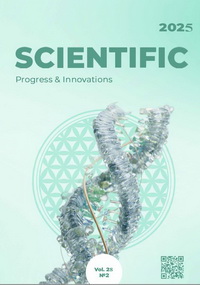Digital technologies in the management of phytosanitary risks in agricultural production
DOI:
https://doi.org/10.31210/spi2025.28.02.05Keywords:
phytosanitary security, digital technologies, agricultural production, pest monitoring, agro-monitoring platforms, satellite data, risk managementAbstract
The intensification of phytosanitary risks in the agricultural sector is driven by a combination of factors, among which climate change, the expansion of international trade, the increasing biological adaptability of harmful organisms to protective agents, and the declining effectiveness of traditional monitoring and control systems are predominant. As a result, the threat of the spread of quarantine organisms intensifies, the phytosanitary condition of crops deteriorates, and crop losses increase. This situation necessitates the search for innovative risk management approaches, with digital technologies playing a key role. The application of digital solutions enables rapid data collection, processing, and visualization, supports the forecasting of pest and disease dynamics, and facilitates informed decision-making both at the individual farm level and within regional agro-systems. The aim of this study is to analyze the potential of digital tools for monitoring, forecasting, and mitigating phytosanitary risks in agricultural production, as well as to assess their effectiveness and limitations. The review employs systems and comparative analysis, synthesis of scientific sources, content analysis of English-language publications from Scopus/Web of Science databases, case studies of leading digital platforms (EOS Crop Monitoring, Cropio, Xarvio, BAS Agro), and an examination of the regulatory framework for implementing digital technologies in the agricultural sector. A typology of phytosanitary risks is identified- biological, agro-climatic, managerial, economic, regulatory, and technological- and their impact on agricultural production efficiency is analyzed. The digital technologies used for risk management are described, including monitoring systems based on drones, sensors, satellite imagery, as well as forecasting models utilizing GIS technologies and machine learning methods. Examples of the effective use of online platforms for threat detection, damage assessment, and decision support are presented. It has been established that digital solutions contribute to improving the profitability of agribusiness, provide a foundation for the environmental sustainability of production, and ensure the flexibility and adaptability of agricultural enterprises to external challenges. At the same time, key implementation barriers have been identified – infrastructure, financial, educational, and regulatory – which require targeted support from the state, innovative businesses, and educational institutions.
Downloads
Published
How to Cite
Issue
Section
License
Copyright (c) 2025 Scientific Progress & Innovations

This work is licensed under a Creative Commons Attribution 4.0 International License.

 Creative Commons Attribution 4.0 International Licens
Creative Commons Attribution 4.0 International Licens